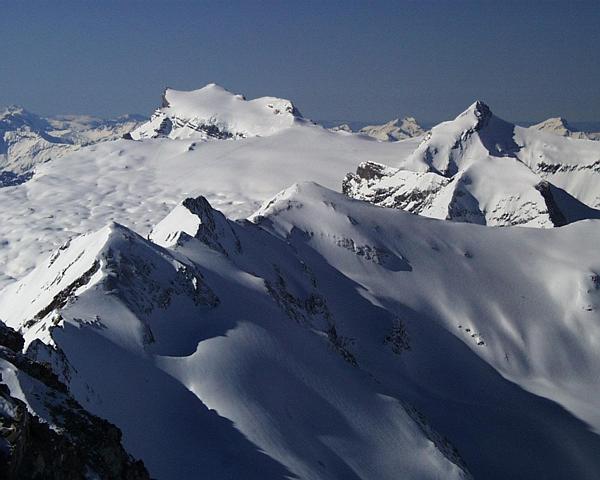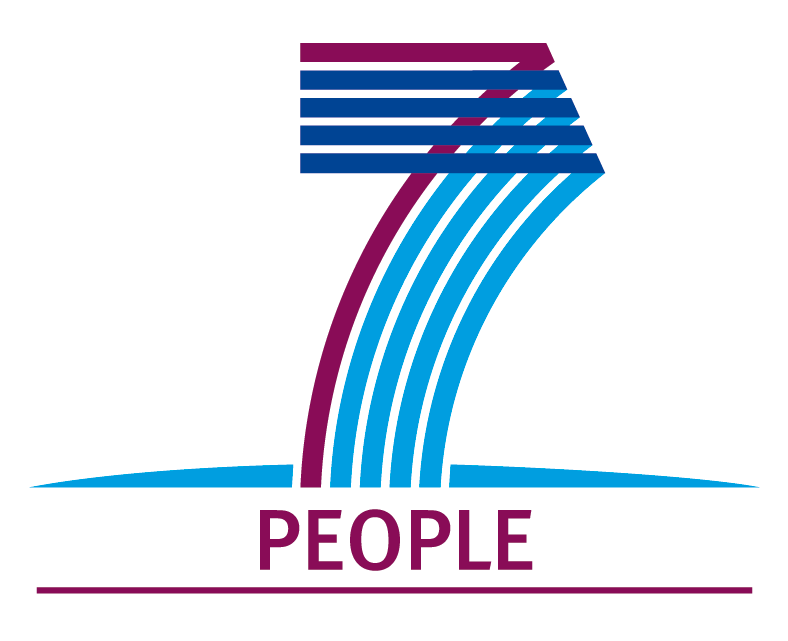Swiss Doctoral Program in Mathematics
Spring School at Les Diablerets
Geometry,
Topology and Computation in Groups
100 Years since
Dehn's Decision Problems
7 - 12 March 2010
Hotel les Sources,
Les Diablerets,
Switzerland

New! Notes and references related to the talks.
Martin Bridson's Links
The geometry of the word problem
Non-positive curvature and complexity for finitely presented groups
The quadratic isoperimetric inequality for mapping tori of free group automorphisms
There is only one gap in the isoperimetric spectrum
Snowflake groups, Perron-Frobenius eigenvalues, and isoperimetric spectra
Pierre de la Harpe's Notes
Bettina Eick's Slides
Sarah Rees' Slides
Olga Kharlampovich's Slides (I)
Olga Kharlampovich's Slides (II)
Conference Photos
Organizers
Laura Ciobanu, University of Fribourg (laura.ciobanu@unifr.ch);
Tatiana Smirnova-Nagnibeda, University of Geneva (Tatiana.Smirnova-Nagnibeda@unige.ch);
Opening Lecture
Pierre de la Harpe (Geneva)
Invited Speakers
| Rostislav Grigorchuk (Texas A&M) |
Alexei Miasnikov (McGill U.) |
Martin Bridson (Oxford) |
Sarah Rees (Newcastle U.) |
Ilya Kapovich (UIUC) |
Francois Dahmani (U. Toulouse) |
| Laurent Bartholdi (Göttingen) |
Bettina Eick (TU Braunschweig) |
Olga Kharlampovich (McGill U.) |
| Denis Osin (Vanderbilt) |
Volker Diekert (Stuttgart) |
Patrick Dehornoy (Caen) |
Titles and Abstracts
Schedule of Talks
Preparatory lectures will take place in Fribourg on February 24.
Schedule
The arrival day is Sunday, March 7. Dinner will be
served in the Hotel les Sources at about 7 p.m.
The scientific program begins on Monday, March 8, at 9 a.m.
The conference ends at lunchtime
on Friday, March 12.
There will be four lectures per day: three morning
lectures from 9 a.m. till noon, and one
afternoon lecture at 6 p.m.
Coffee and tea will be served at 9.50 a.m. in the conference center
and at 5 p.m. in the Hotel les Sources.
Lunch time is 12.15 (with a possibility to order a picnic: orders
have to be placed before 9 a.m. the same day). Dinner time is 7 p.m.
Your stay
Rooms have been booked for all participants at Hôtel les
Sources and Hotel le Chamois.
The talks take place in the conference center 5 minutes walk from the
hotels.
The price of accommodation and full board at the Hôtel Les
Sources
(to be paid at the conference site)
for participants from EPFL, Uni-Fribourg, Uni-Genève, Uni-Neuchâtel,
Uni-Bern, Uni-Basel:
in a double room: CHF 75 for the whole period
in a single room: CHF 150 for the whole period
for other participants:
in a double room: CHF 128 per person per night
in a single room: CHF 149 per person per night
How to get there
How to get to Les Diablerets
Swiss Railroad
You can view a smal map of the hotel surroundings, including the
railway station in Les Diablerets
and the conference center, under "Situation" on the hotel Les
Sources
website.
Scientific Committee
Laura Ciobanu (Fribourg)
Tatiana Nagnibeda-Smirnova (Geneva)
Enric Ventura (Barcelona)
Armando Martino (Southampton)
Andrew Duncan (Newcastle)
Supported by




Titles and Abstracts
Minicourses
Martin Bridson (Oxford): Groups with quadratic Dehn functions
I shall begin by sketching a proof of the basic equivalence
between the problem of filling loops in the universal cover of a closed
manifold and the word problem for the fundamental group of the manifold.
I shall explain the geometry behind the Brady-Bridson snowflake
construction, proving that Dehn functions are dense in the
super-quadratic range. I'll then concentrate on the class of finitely
presented groups that satisfy a quadratic isoperimetric inequality,
surveying the groups that are known to lie in this class and discussing
what properties they have in common. I plan in particular to discuss
what is known for lattices in semisimple Lie groups and what is known
about the homological finiteness of groups with a quadratic Dehn
function. The third lecture will include an explanation of the main
ideas that go into proving that all free-by-cyclic groups satisfy a
quadratic isoperimetric inequality.
Alexei Miasnikov (McGill U.): tba
Denis Osin (Vanderbilt): Filling in groups acting on hyperbolic spaces
We will start with a brief discussion of equivalent
definitions and basic properties of relatively hyperbolic groups. We
will then discuss a generalization of relative hyperbolicity based on
the notion of a hyperbolically embedded subgroup. Examples of such
subgroups naturally occur when a group admits a 'nice' action on a
hyperbolic space. Finally we will show how hyperbolically embedded
subgroups can be used to generalize the Gromov-Thurston theory of Dehn
filling in hyperbolic 3-manifolds. Some applications to hyperbolic and
relatively hyperbolic groups, mapping class groups, and outer
automorphism groups of free groups will be presented.
Sarah Rees (Newcastle): The Word Problem in the Chomsky Hierarchy
I shall talk about the word problem for groups, and how hard it is
to solve it. I'll view the word problem of G=< X> as the
recognition of the set WP(G,X) of words over X that represent the
identity, and look to
relate properties of G to the complexity of WP(G,X) as a formal
language, that is to the complexity of the Turing machine (model
of computation) needed to recognise that set.
Talks
Laurent Bartholdi (Göttingen): Automatically presented groups and algebras
Francois Dahmani (U. Toulouse): Hyperbolic geometry to solve instances of Dehn's third problem, the isomorphism problem
The problem of algorithmically deciding whether two finite
presentations define isomorphic groups is unsolvable (Adian, Rabin).
However, in 1995 Sela proposed a solution to the isomorphy problem for
a class of torsion-free rigid hyperbolic groups. The geometry of
negative curvature allows to provide strong structural features for
groups, and also gives possibilities to effectively compute in these
groups (e.g. the problem of solving equations in these groups is
algorithmically solvable, in a certain sense). In joint works with
Daniel Groves, and Vincent Guirardel, we completed and extended Sela's
program to a wide class of relatively hyperbolic groups, and to all
hyperbolic groups.
This work required revisiting an important algorithm of Makanin for
solving equations in free groups, in a geometric and dynamical
perspective.
Patrick Dehornoy (Caen): Le probleme de mots pour les groupes de tresses
Volker Diekert (Stuttgart): On Computing Geodesics in Baumslag-Solitar Groups
The Baumslag-Solitar group BS(p,q) is a one-relator group defined by
BS(p,q) :=< a,t | t a^p t^{-1}=a^q>. In my lecture I will give a dynamic programming method for computing geodesic words.
As a consequence of our method we will see that if p divides q, then the set of horocyclic elements (elements in the cyclic subgroup < a >) in length-lexicographical normal form
is a deterministic (and unambiguous) linear context-free (one-counter) language; and it can be
recognized in log-space. The growth series of the horocyclic subgroup is therefore a rational
function (quotient of two polynomials) and can be calculated effectively. Rationality of the growth series is
due to Freden et al. who showed it with a different method. The growth tells us how many group elements
are in balls are in balls of a certain radius around the origin of the Cayley graph of BS(p,q).
If p divides q our main result is a square-time algorithm to compute the geodesic length of all group elements.
This is a positive partial answer to a question raised by Elder et al. in 2009. In the case where p does not divide q it might be that the problem is actually Co-NP-complete. The investigation of the general case remains a challenging research project.
My lecture is based on a joint work with Jurg Laun.
Bettina Eick (TU Braunschweig): The classification of p-groups by coclass
This is a survey on the recent advances on the classification of p-groups.
It briefly discusses the classification of p-groups by their order. Then
it introduces the idea of coclass and describes coclass graphs. Finally,
it surveys some of the recent results on the classification by coclass.
Rostislav Grigorchuk (Texas A&M): Torsion images of Coxeter groups and the Wiegold problem
Ilya Kapovich (UIUC): Geometry of Out(F_n) and geodesic currents on free group
Olga Kharlampovich (McGill U.): Interesting examples of solvable groups
I am going to discuss algorithmic problems for solvable groups, describe
my construction of a f.p. 3-step solvable group with undecidable word
problem, discuss interesting properties of this group and other
interesting examples of solvable groups.
Pierre de la Harpe (Geneva): A propos de Max Dehn, de topologie et de théorie des groupes





